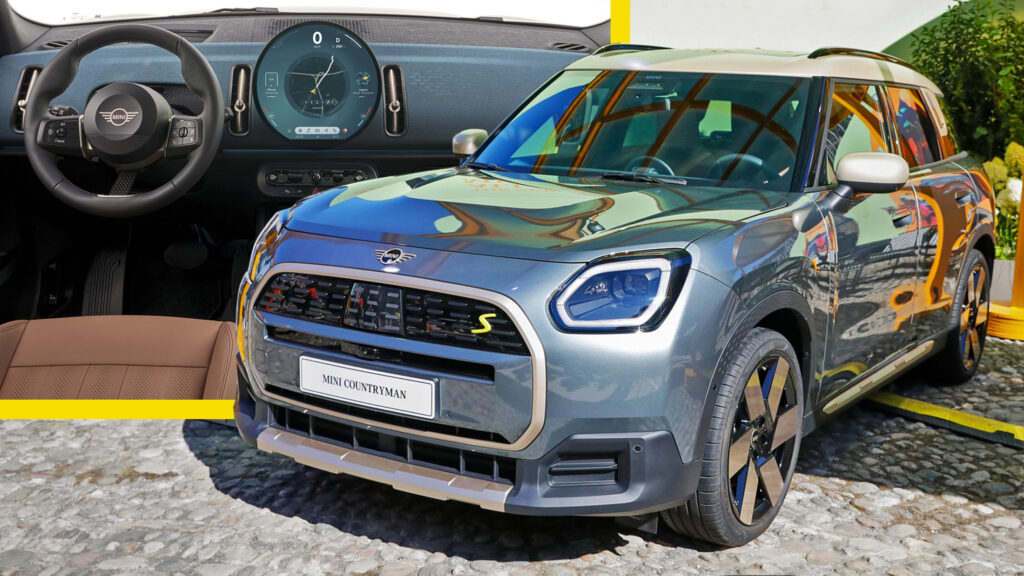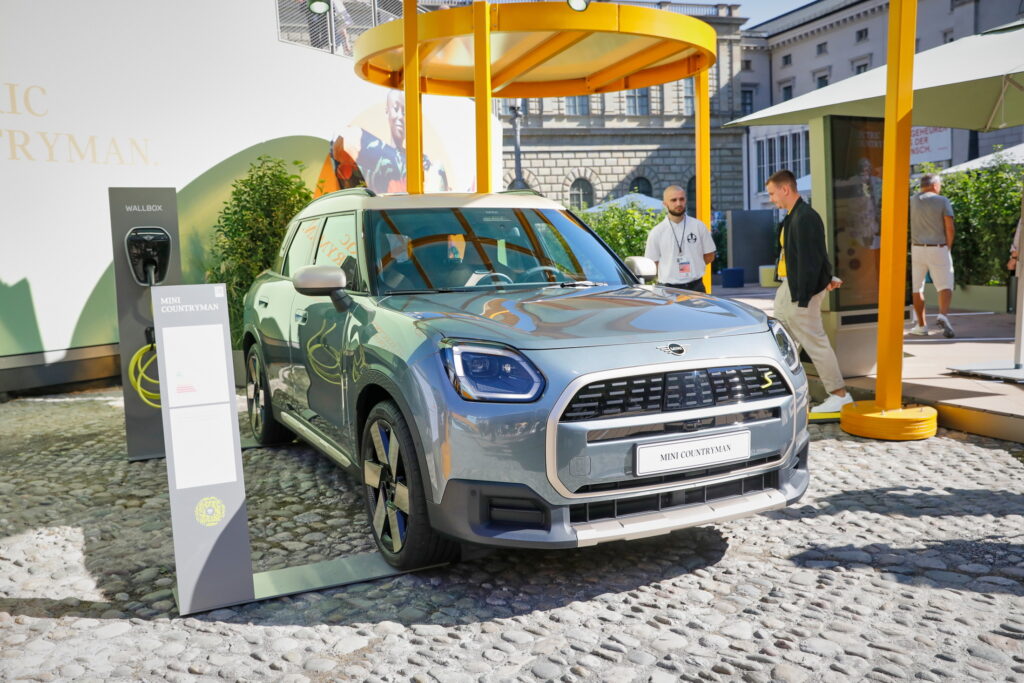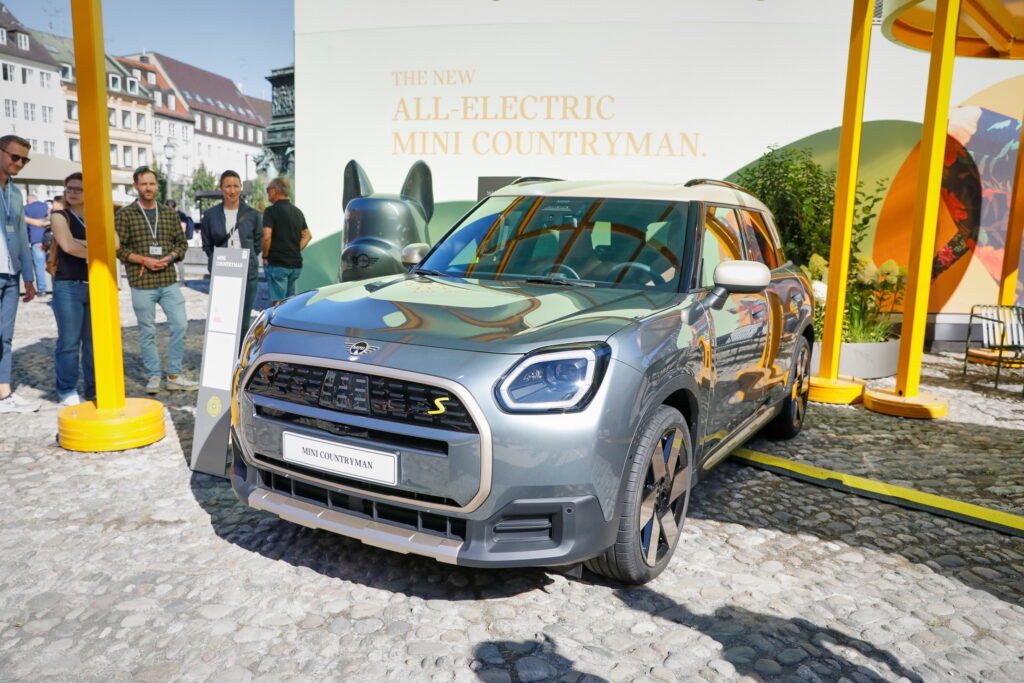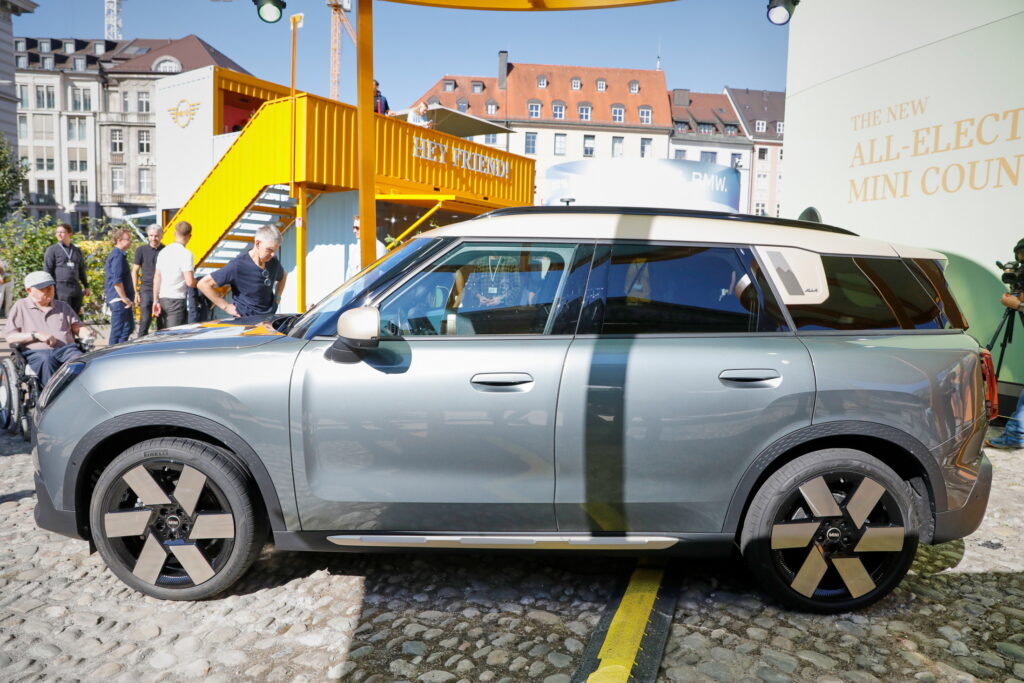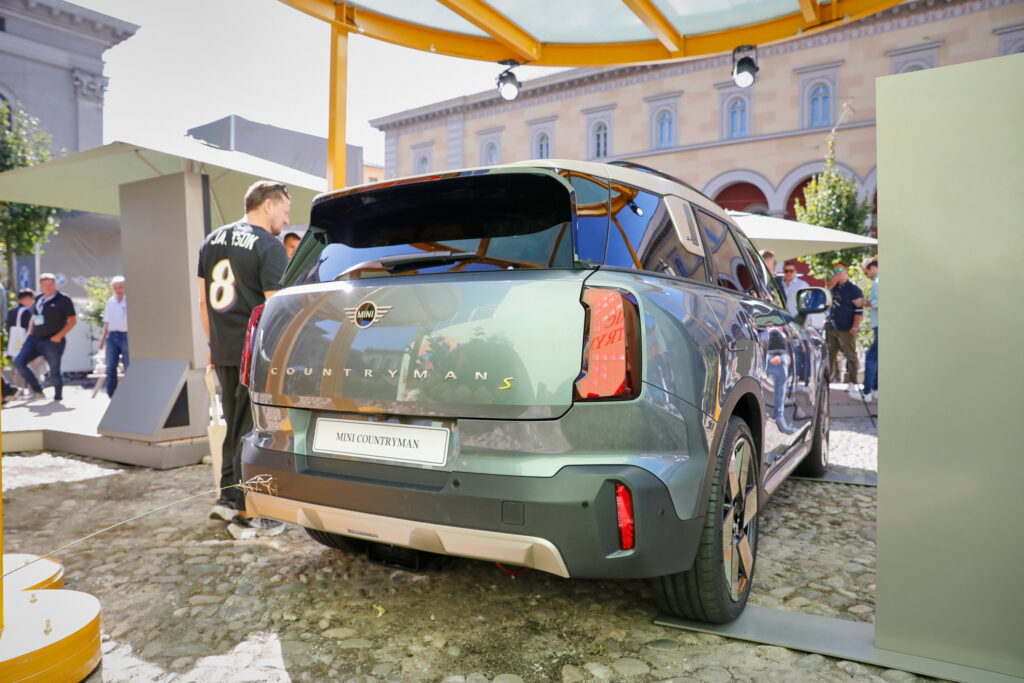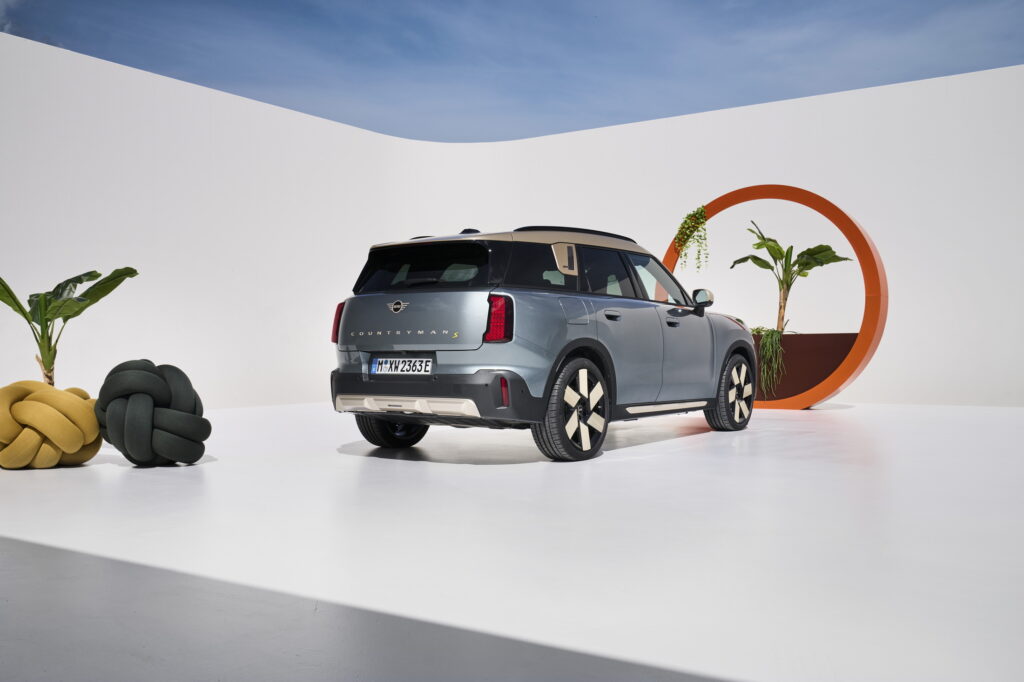This story has been updated with live pics of the Mini Countryman SE from the IAA Mobility Show 2023
Mini is among the stars of the upcoming IAA Mobility Show in Munich as, besides the new Cooper, it launched the new Countryman. The largest and most spacious Mini offering has grown in all dimensions compared to its predecessor, featuring evolutionary styling and a minimalist interior. The third generation of the SUV is introduced in two zero-emission guises with single and dual electric motors, but it will also be offered in petrol and diesel flavors.
The 2025 Countryman is positioned at the core of the premium compact SUV segment measuring 4,429 mm (174.4 inches) long. This is 13 cm (5 inches) longer compared to the model it replaces, with an extra 6 cm (2.4 inches) in height and slightly wider tracks giving it a more commanding road presence. Despite the larger footprint, the body is more aerodynamic than ever with a drag coefficient of 0.26 cd for the electric variants compared to the 0.31 cd of the previous generation.
More: MINI Clubman Final Edition Debuts As A Copper-Themed Farewell
Live Pictures: Baldauf / ten Brink for CarScoops
The new Countryman is one of the first production models to adopt Mini’s new design language called “Charismatic Simplicity“. The core styling elements of the previous generations are still there but significantly evolved with fewer curves and sharper lines on the bodywork. The new face has a larger octagonal grille although most of it is body-colored. The smaller LED headlights lost their bulbous shape, and are positioned higher than before.
The floating cap-style roof and the “circumferential black band” greenhouse with the horizontal beltline are still present, while the distinct C-pillar design works as a means of differentiation between trims. The wheels are also larger measuring up to 20 inches although there are smaller options starting from 17 inches. Other notable details include the stretched rear overhang, the flush door handles, and the boxy fenders with thinner plastic cladding around the wheel arches.
At the back, the slimmer Matrix LED taillights still get Mini’s signature Union Jack graphics, and the rear spoiler is more prominent. The designers omitted all of the chrome accents from the exterior, a trend that has become a necessity for environmental reasons. There are four available trim levels – the basic Essential, the mid-range Classic, the more exquisite Favoured, and the sportier John Cooper Works – each with unique styling and equipment features.
MINI’s Most Spacious Model Comes With A Minimalist Interior Design
Inside, everything looks simpler compared to Mini’s from the past, with fewer buttons, woven textile surfaces, and the latest bits of technology. Speaking of which, the new centrally-mounted 9.4-inch circular OLED display with thin bezels doubles as an infotainment touchscreen and a digital instrument cluster. It runs on the Android-based Mini Operating System 9, integrates an AI-based virtual assistant named Spike, and is configurable with 8 available Experience Modes which are also synced to the sophisticated ambient lighting. While there is no screen behind the steering wheel, Mini does offer an optional head-up display for those who want to keep their eyes on the road.
On the center console, there is a toggle bar with 5 switches, dedicated to the most important functions (parking brake, gear selector, start/stop key, experience mode selector, volume knob) although the climate controls are integrated within the touchscreen. The door cards, floor, and mats are made of recycled polyester, with the fancy two-color design being the result of a specially developed knitting process.
Another interesting detail is the optional textile strap acting as the third spoke of the multifunctional steering wheel which resists the flat-bottom trend. Practicality has also been enhanced with larger cup holders, a special pouch for smartphones, and an optional storage box on the center tunnel.
Speaking of practicality, the British automaker brags that the Countryman is the “largest and most spacious Mini model available” highlighting its family-friendly character. The rear bench can slide back and forth by 13 cm (5.1 inches) prioritizing legroom or boot space (just like in the BMW X1), while the rear seatback can be adjusted in six positions.
The shoulder room has grown by 3 cm (1.2 inches) at the front and 2.5 cm (1 inch) at the back. Finally, the boot ranges between 460 lt (16.2 cubic feet) to 1,450 lt (51.2 cubic feet), with an extra under-floor compartment. Those figures represent an increase of 55 lt (1.9 cubic feet) and 175 lt (6.2 cubic feet) respectively compared to the previous generation.
Fully Electric, Petrol, and Diesel Options
The new Countryman is based on an evolved and stretched version of the BMW Group’s UKL architecture which already underpins the third-gen BMW X1/iX1 and the second-gen BMW 2-Series Active Tourer. Showing its commitment to electrification, Mini chose to introduce the two fully electric variants of the new Countryman first, bearing the E and SE monikers:
Mini is determined to become an EV-only brand by 2030 which means there is plenty of time left for ICE-powered models. In that context, the company confirmed that the Countryman will also be available with petrol and diesel engines. The Countryman C will be the entry-level FWD petrol offering, joined by the more powerful Countryman S ALL4, the performance-focused Countryman JCW, and a more frugal diesel-powered version.
The combustion engines which were not detailed at this point will most likely mirror those of the mechanically related BMW X1, likely including mild-hybrid options. As for the plug-in hybrid that used to be offered in the previous generation, it has been officially discontinued from the range, as the BEVs made it obsolete.
More: Europe’s BMW X1 sDrive18i Is A Decent Base Model Despite The 3-Cylinder Engine
Taking advantage of the slightly wider tracks, and the longer wheelbase, Mini engineers targeted a sporty yet comfortable ride despite the bulkier body. Furthermore, besides the standard setup, there is the optional Adaptive Suspension with frequency-selective dampers, bringing the SUV 15 mm (0.6 inches) closer to the ground.
Last but not least, Mini equipped the Countryman with Level 2-ready ADAS, including sophisticated systems like hands-free driving capability on particular routes at speeds of up to 60 km/h (37 mph), automatic parking, and a semi-automated function for moving to the right lane before taking a highway exit.
The 2025 Countryman will be produced at the BMW Group plant in Leipzig, Germany, alongside the BMW X1/iX1, starting in November 2023. Pricing has yet to be announced but we expect it to be more expensive than before. Besides the mechanically-related BMW, rivals of the Countryman include other premium compact SUVs like the Mercedes GLA/EQA, the Audi Q3 / Q4 e-tron, the Volvo XC40, and the Alfa Romeo Tonale.








